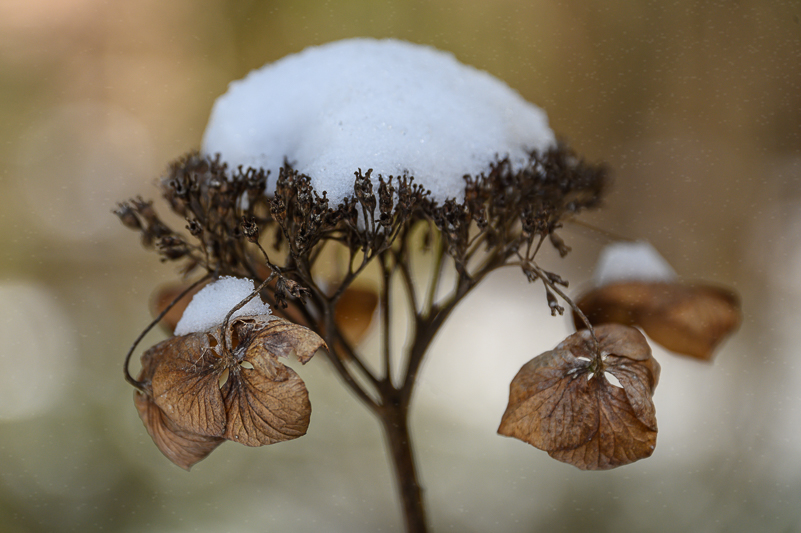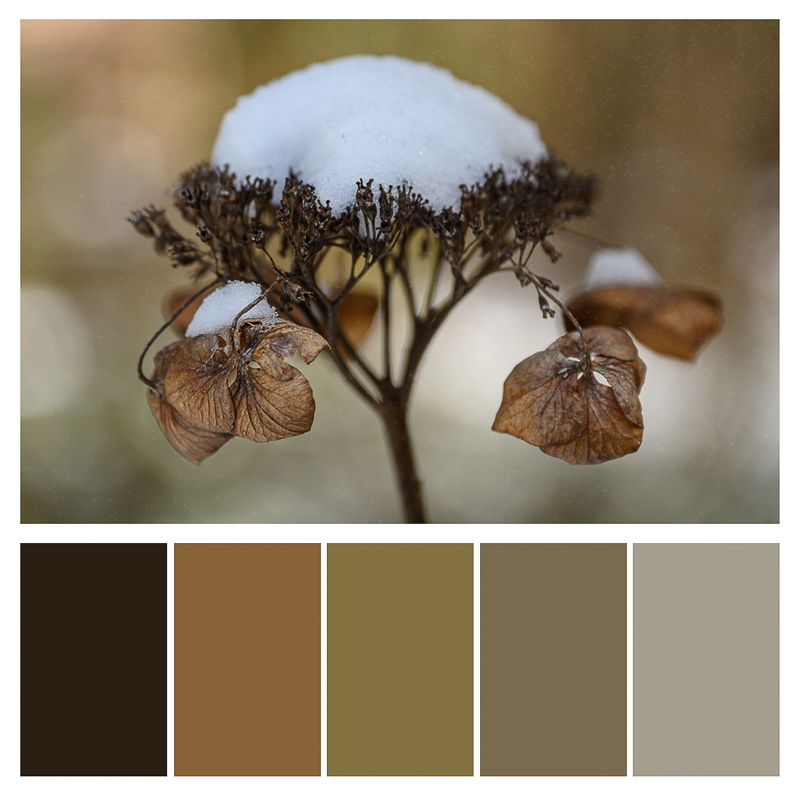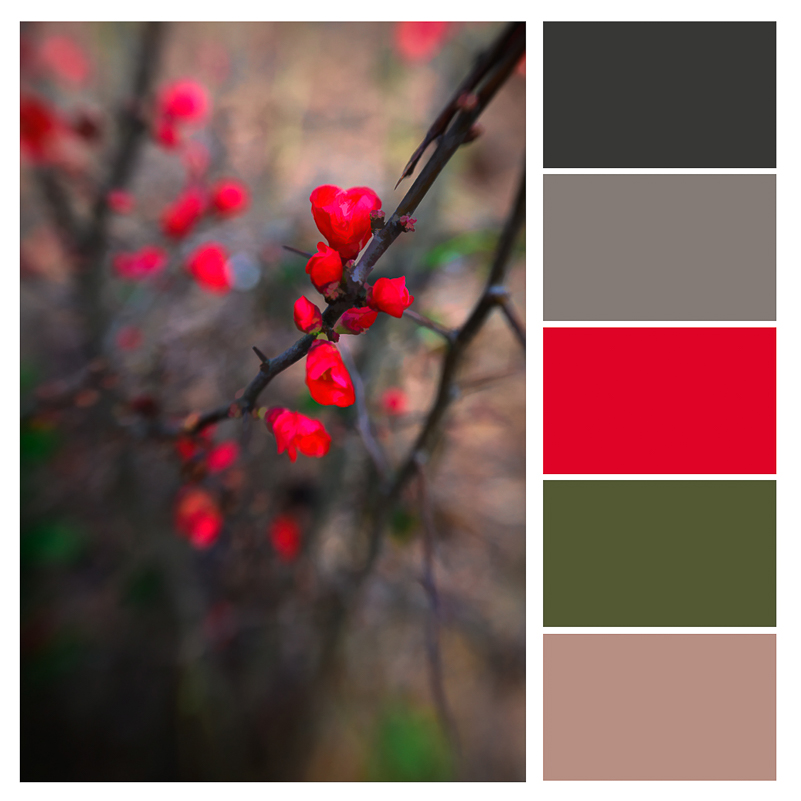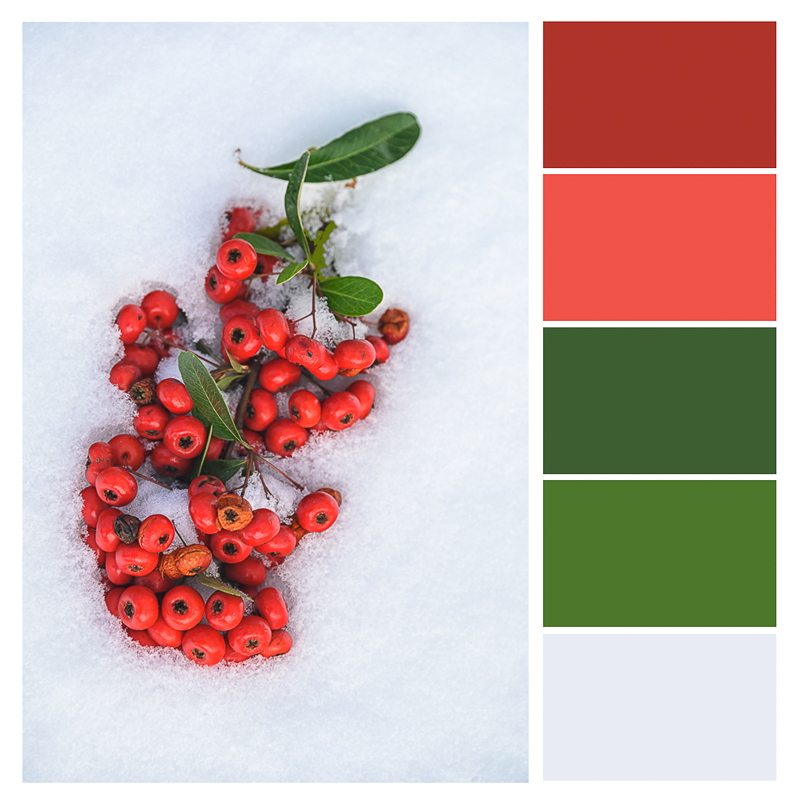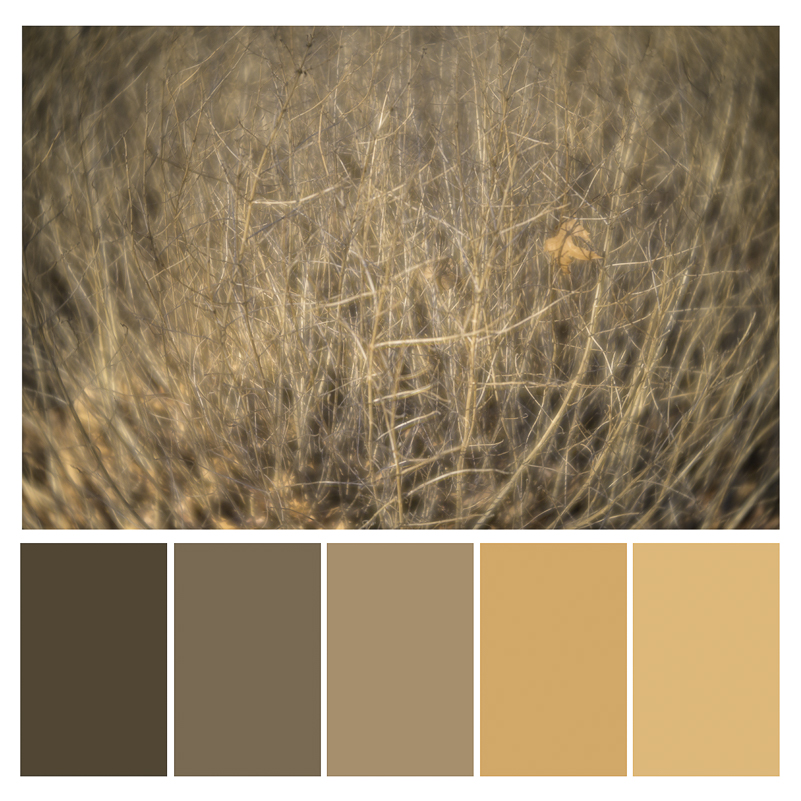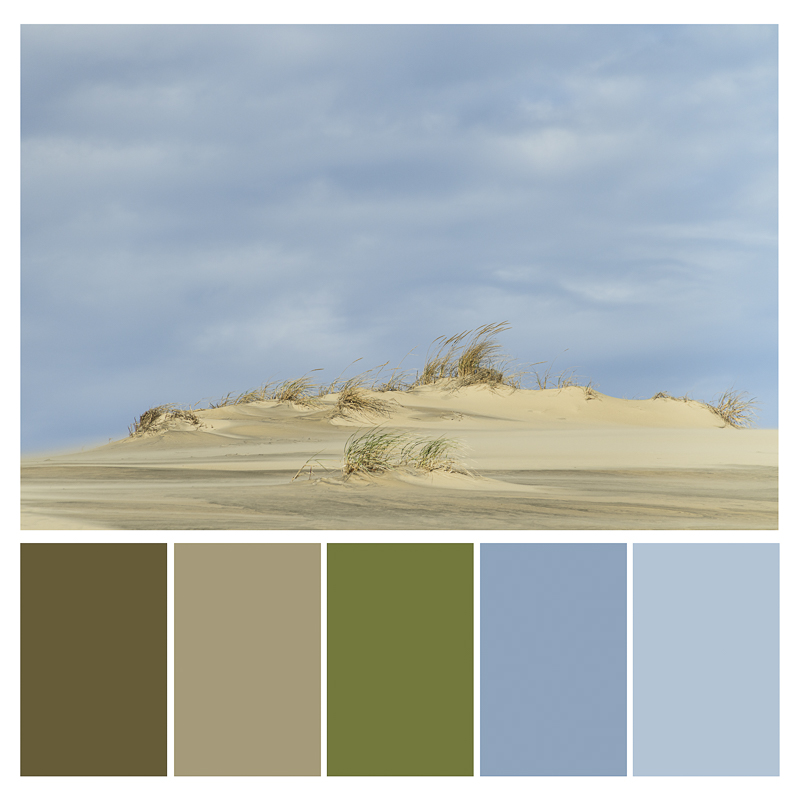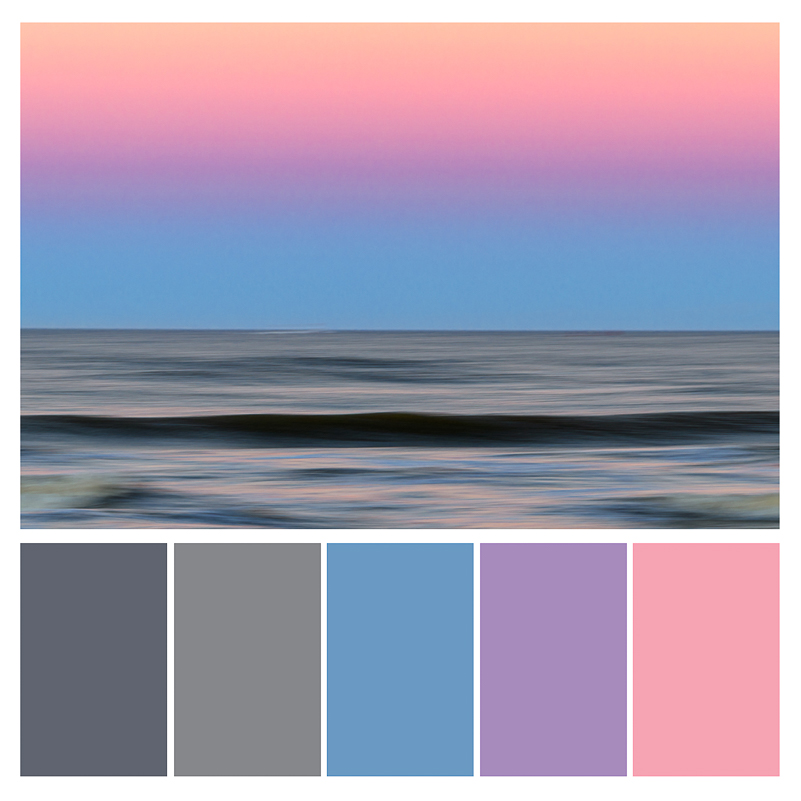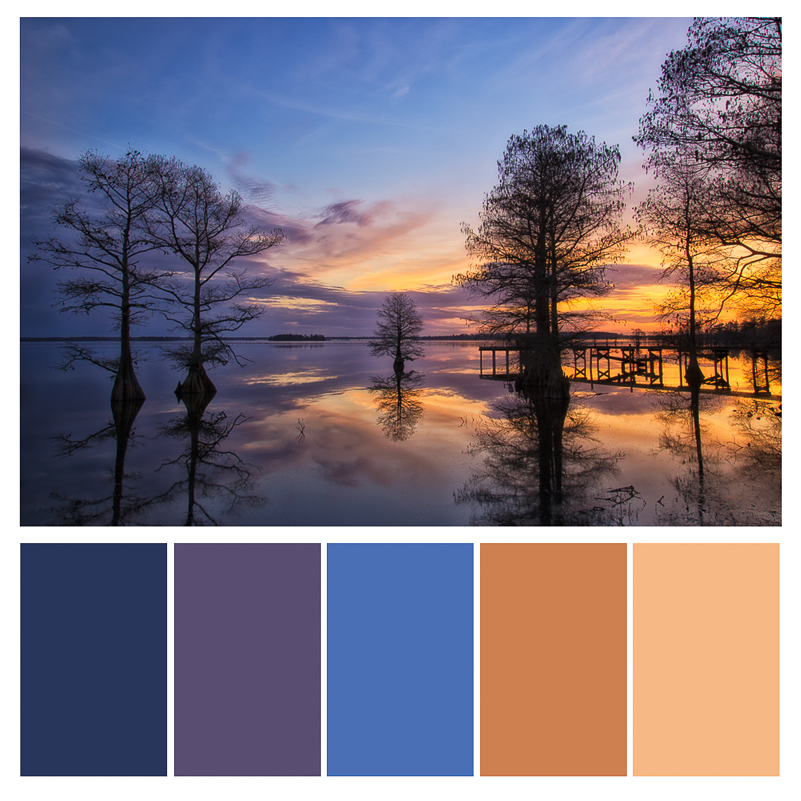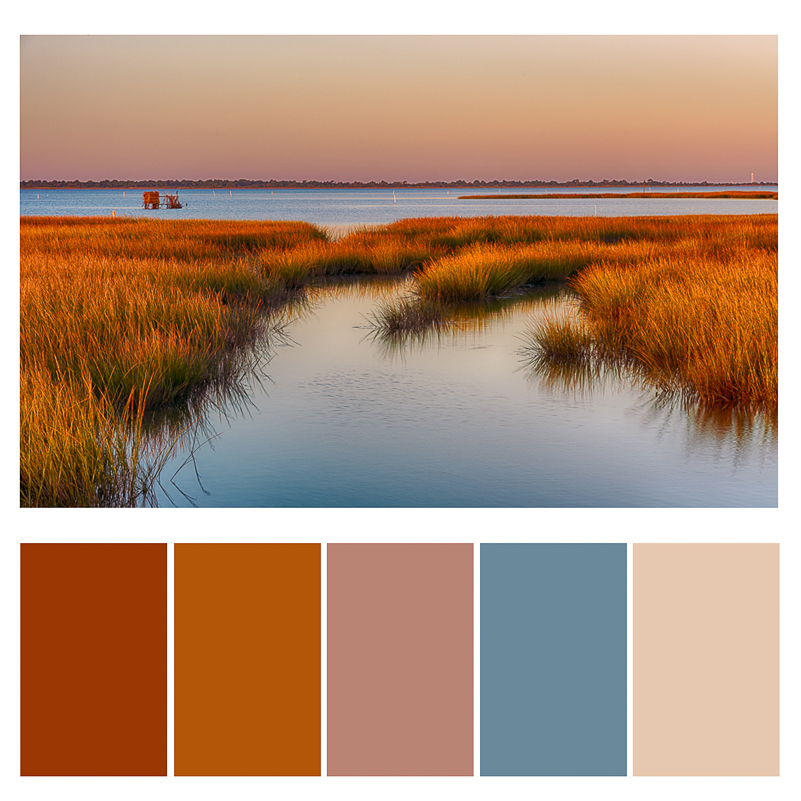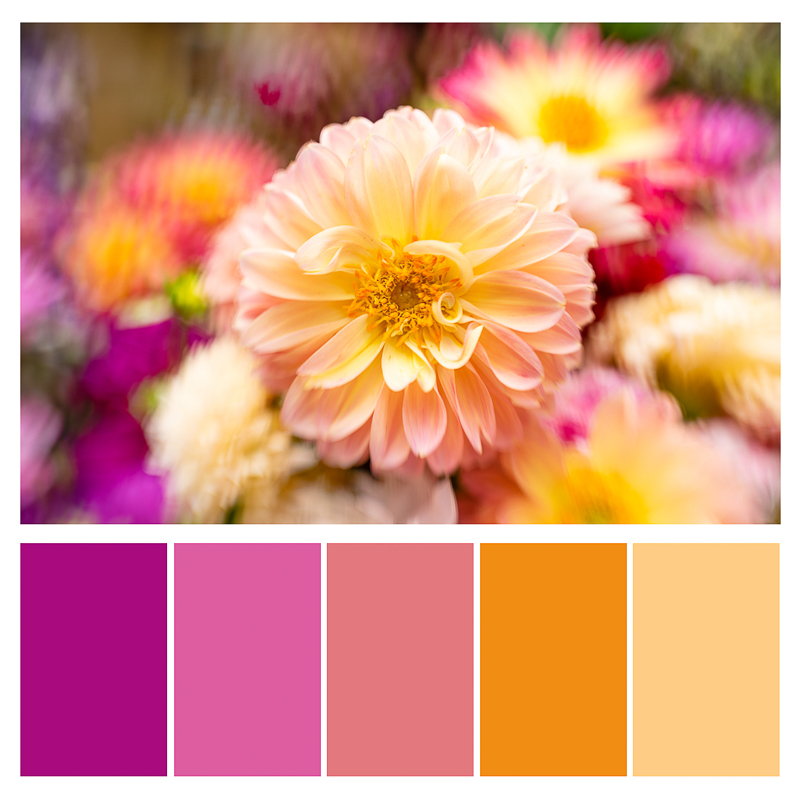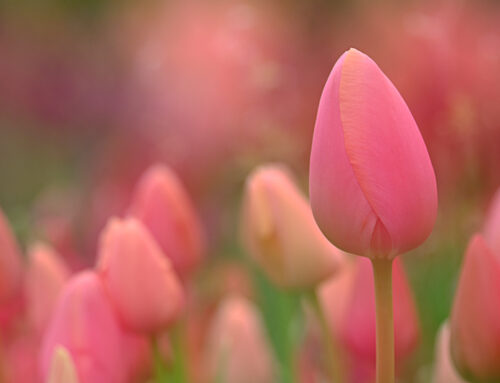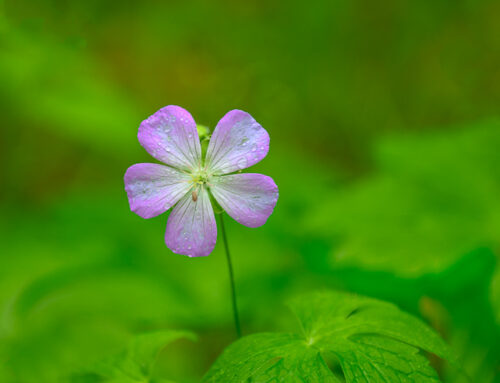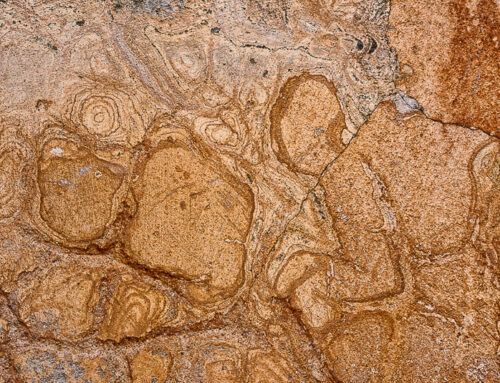The color of springtime is in the flowers; the color of winter is in the imagination.
–Terri Guillemets
The following observations on the palettes of winter started with a question. If I ask you, “what is the color of winter?” what is your answer? At first, I was thinking “white” is the most obvious and my first choice. However, when I asked one of my sisters this question, she said, “Gray and yellow.” Did we grow up in the same place, I wondered. Then, I asked why those colors. Her response was that gray was the color of snow with dirt in it after it was plowed, and the yellow … well, don’t eat yellow snow. Enough said.
As I began thinking about writing this blog, it was officially “winter” by the date on the calendar. And, where I live in eastern North Carolina, we were experiencing temperatures in the 70s. We’ve since cooled down into the 20s and have had our first snow and ice event, which is rare. In those few days after the storm, I noticed a few unusual things. Walking and driving around my neighborhood and town, I saw yellow daffodils in bloom and some pink and white petalled, beautifully confused, flowering trees.
It occurred to me then that the colors of winter are more of a collection of palettes that show themselves at different times of the day, under varied weather conditions, and are dependent on your geographic location. “It depends,” is an accurate response to the original question of “what is the color of winter.”
THE PALETTES OF MY YOUTH
While I have lived in the flatlands of eastern North Carolina for almost forty years, my memories of winters growing up on Long Island and our much colder winters steer my thoughts to the colors I miss and the ones I remember. For starters, we got snow, lots of it, every winter. And, I loved it! Even now, crazy as it may sound to some, I miss it. The colors I remember from the winters of my youth are: white, red, blue and black. I’m quite sure there were other colors, like greens and browns mixed in, but mostly these four colors come to mind. I was not a photographer back then, but images are etched in my memories and are confirmed by family photos.
Why those colors? Well, for starters, we always had snow in winter, even if Christmas wasn’t white. But when it showed up, my three sisters and I were often bundled up in snowsuits, boots and mittens with strings that ran through both sleeves and sent outside to play. Our snowsuits, as I remember, were mostly red and blue. Connected to those colors and the winter season are memories of building snowmen and forts, stomping out trails, having snow ball fights and ice skating in the backyard and on a nearby frozen lake. Add to that sledding at a local sandpit and being pulled in sleds by my father on his red tractor. These are all good memories, and it surprises me not that they and those colors are what come to my mind as I ponder the winter palette.
THE PALETTES OF THE SOUTHERN FLATLANDS
Having lived in the South for so many years (and adding a camera of my own to record what I see, feel and experience), the color palettes of my winters have changed dramatically. Where I live, we hardly ever get snow. When we do, it sometime feels like I am one of the very few who are super excited about it. (I’ve learned to temper that excitement with the fluidity and uncertainty of the forecasts.) I experience the snow differently on a visual and emotional level. Words that come to my mind now regarding snow (besides “yaaaaay”) include cold, white, pure and peaceful. Walking in snow as it softly falls is one of the most peaceful times I can imagine in winter. For that, we must leave the adulting concerns like driving, milk, bread and falling by the wayside. We must be in those moments, rare as they are, to experience that peace. But since snow is not a common occurrence, I must move onto the more “regularly scheduled” colors of my winters now.
Around here, the palettes of winter include more muted tones – browns, tans and grays with pops of other colors like greens and reds interspersed. When I drive outside the city limits, there are dormant fields of farmland, stretches of woods and fields gone wild. If I drive further east, to the coast, those tones are still dominant, but the winter skies and waters offer some shades of blue that lift the soul. And, even in the dead of winter, the skies will light up with color fests for sunrise and sunset to begin and end the shorter days. Still, many days are filled with grayer skies and clouds.
The other day I took a ride out to our local arboretum. (If you know me, you know how I love the gardens and flowers.) In other seasons it is filled with a plethora of festive colors, shapes and textures. On this day, as you might expect, the dormancy of winter and its muted colors filled the space. Dried hydrangea blooms still on the bush, still beautiful, in their tans and browns. Formerly green, wispy grasses were now dressed in light browns and muted golds. And, the once colorful lantana bushes were now just a wide swath of sticks and branches of mostly gray with the occasional brown oak leaf caught in their midst. Hardly any sign or signal of a coming spring was found, not even the green tips of a restless daffodil in this garden.
In what one might describe as dull and gray in this garden’s winter clothes, I found a quietness and calm as I sat on the ground before the seemingly “colorless” remnants of the other three seasons. I reminded myself that winter is a necessary part of the cycle of seasons – a time of rest, hibernation and, sometimes even recovery, introspection. Winter provides us all with an opportunity for quiet contemplation before spring bursts on the scene. One photographer friend calls it “stick season,” and I can see why. Most of our trees here have dropped their leaves, and we are left to appreciate their bones.
And, yet, there are things that remain ever green, like the holly trees filled with red berries for the birds, the magnolia trees, and even the southern live oaks scattered throughout the south remain nearly evergreen, waiting for spring to replace their leaves. A look at the grasses and fields shows them changed over to mostly shades of tan and brown. And, yet, there are the rogue ferns that hold onto their greens while others have transitioned to golden browns. One must appreciate the rebels even if there’s no explaining their refusal to go with the winter’s flow.
PERSPECTIVE CHANGES EVERYTHING
In my youth and up until my mid-thirties, I didn’t view the world around me with an eye for color and light. Truthfully, I can only remember noticing things that caught my attention and taking pictures with my point-and-shoot camera, hoping that the pictures came out. I don’t recall philosophical discussions inside my head as I photographed. Nor do I recall consciously or intentionally thinking of how what I saw influenced the mood of the scenes or what made me take notice. I didn’t recognize the relationships of color and light on their own, not really. Nor did I see in a focused way the changing color palettes of the seasons beyond the obvious. I only knew that spring was the most vibrant and my favorite. I didn’t notice the subtleties of the changing tones or how the shifting seasons brought about changes in me. I do now – now that I see with the eyes of an artist, poet and photographer.
Each season offers up something new to notice, appreciate and photograph. Winters can be more challenging. There’s not much in nature putting on a spectacular show, especially in my area. The surrounding rural landscapes are filled with fallow fields, mostly leafless woods and just a slight pop of color. Winter moments and winter moods are different, more subdued. This prompts one to look more closely, find the smaller stories to appreciate. This is good practice for the imagination. One must look for shapes, lines, textures, interactions and relationships, contrast and the colors of the season. They are all different. The winter palettes offer opportunities to be underwhelmed enough to accept a challenge of seeing more where “more” does not jump up and hit you in the face.
The images included in this post were all made during the “official” winter season in my neck of the woods over the last several years. They represent to me the variations and subtleties of my winters and what I have come to see that I didn’t see before. I did not edit them as artistically as I otherwise might as I wanted the colors and tone to resonate more closely to the moments. The more I consider the idea of seasons and seeing and being fully in them, the more I will see on future meanderings during this “stick season.”
THEN, NOW AND BEYOND
It’s funny what we remember from our youth and what we don’t. I have no vivid memories of the “Blizzard of 1978” as it apparently dumped up to 17” of snow on Long Island during one of the last few winters before I fled south. My best friend does. Looking back on those winters, I had thoughts of my father being out with chains on his tractor wheels, plowing driveways in the neighborhood. And, if there were downed trees, he’d be out with the chain saw, while we dragged limbs away. It is likely that my sisters and I, at some point, having ditched our snowsuits, would have bundled up to “play” in the snow. You know, when you’re young and have no major responsibilities, perspectives and memories are different. The parents of our youth were likely making sure there was food in the house, gas in the cars, rock salt in the driveways and plenty of blankets and candles in case the power went out. Us? We were just waiting for the snow.
Today, as I wrap up writing these observations of the varied winter palettes, the place of my youth sits beneath a blanket of snow that could reach up to 24 inches, with temperatures in the low teens and highs in the low 20s this weekend. Lots of adult thinking and doing happening on “the Island”. Surprise – I am not wishing I were there. I will always love snow, but today I’m thankful to be where I am.
My own forecast here – just cold. We’re done with the dusting of snow we got overnight, and the temperatures are in the mid-thirties. Today’s palette? Southern–muted, gray, brown and tan with a pop or two of red and green. It’s all good. While I wait for spring, I will venture out and offer up a greater appreciation for what is before me. I will look more closely at my own winter and work to capture its essence in a deeper way than before.

